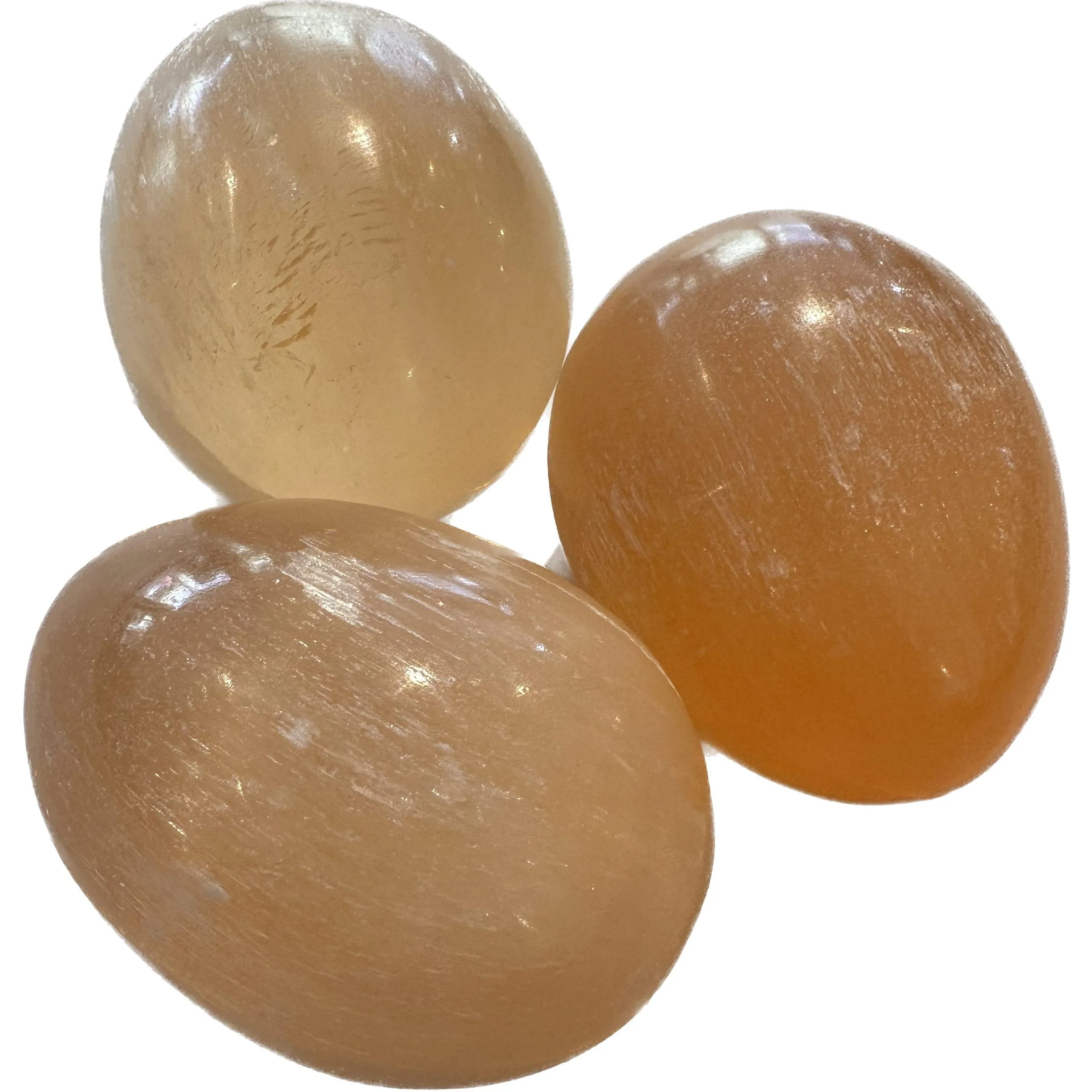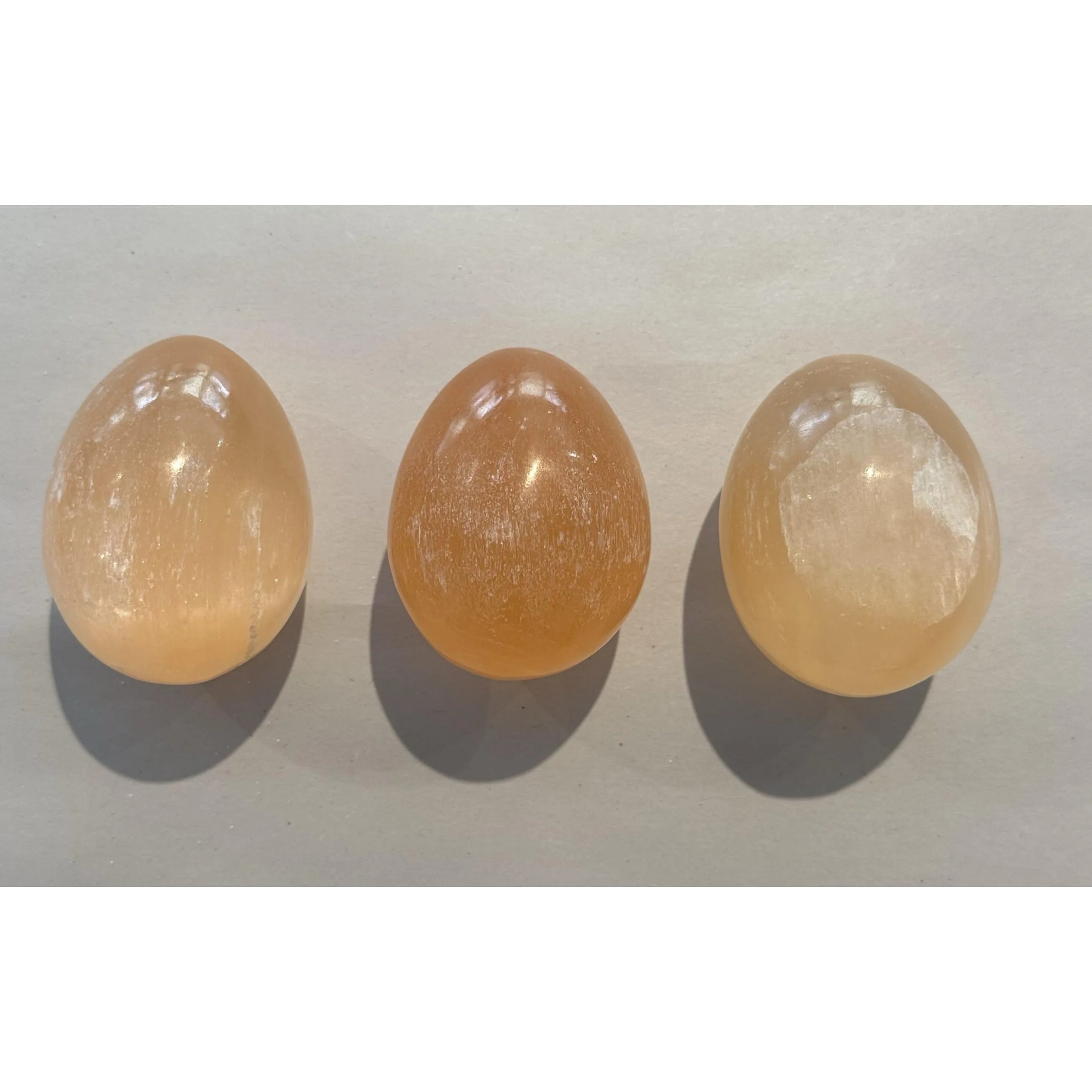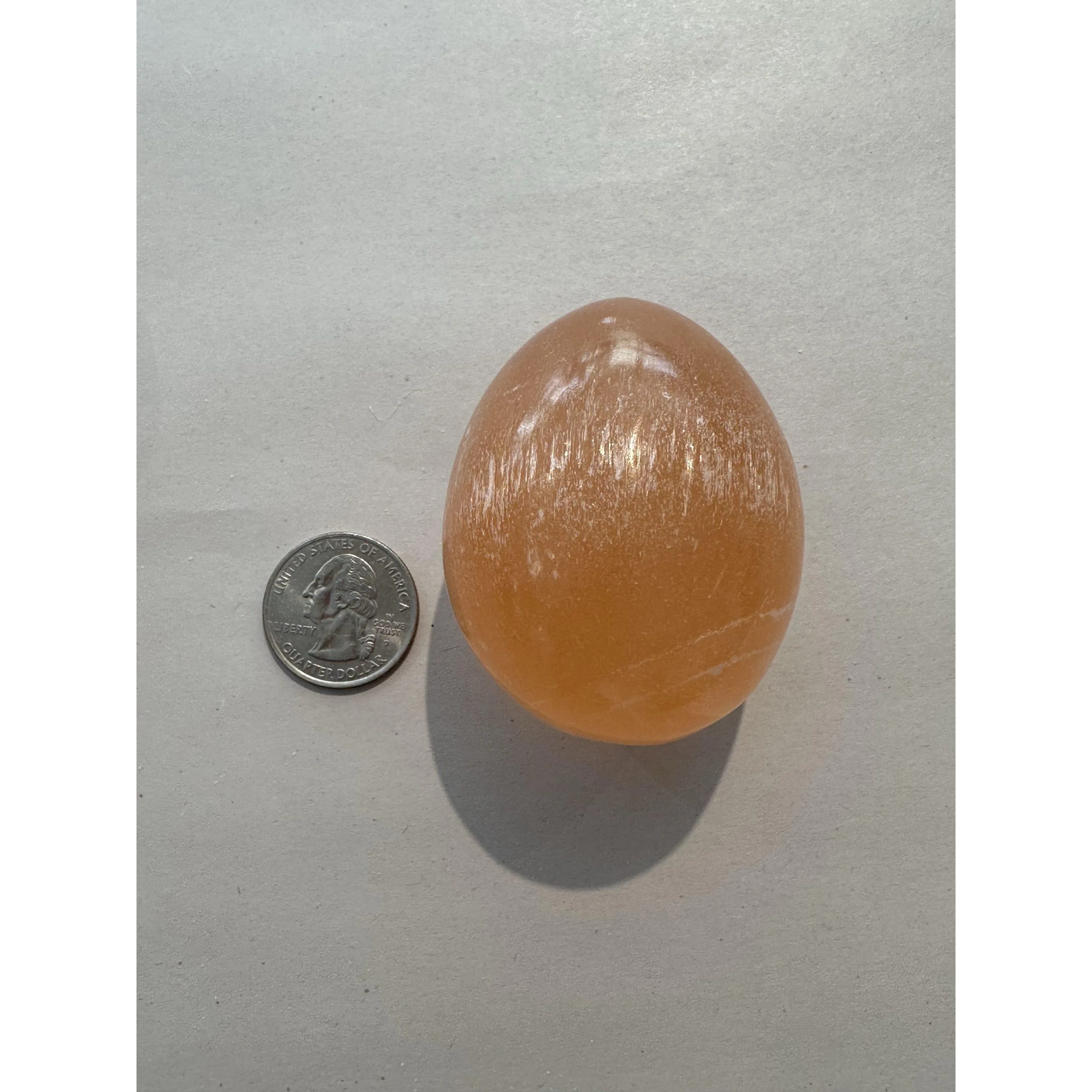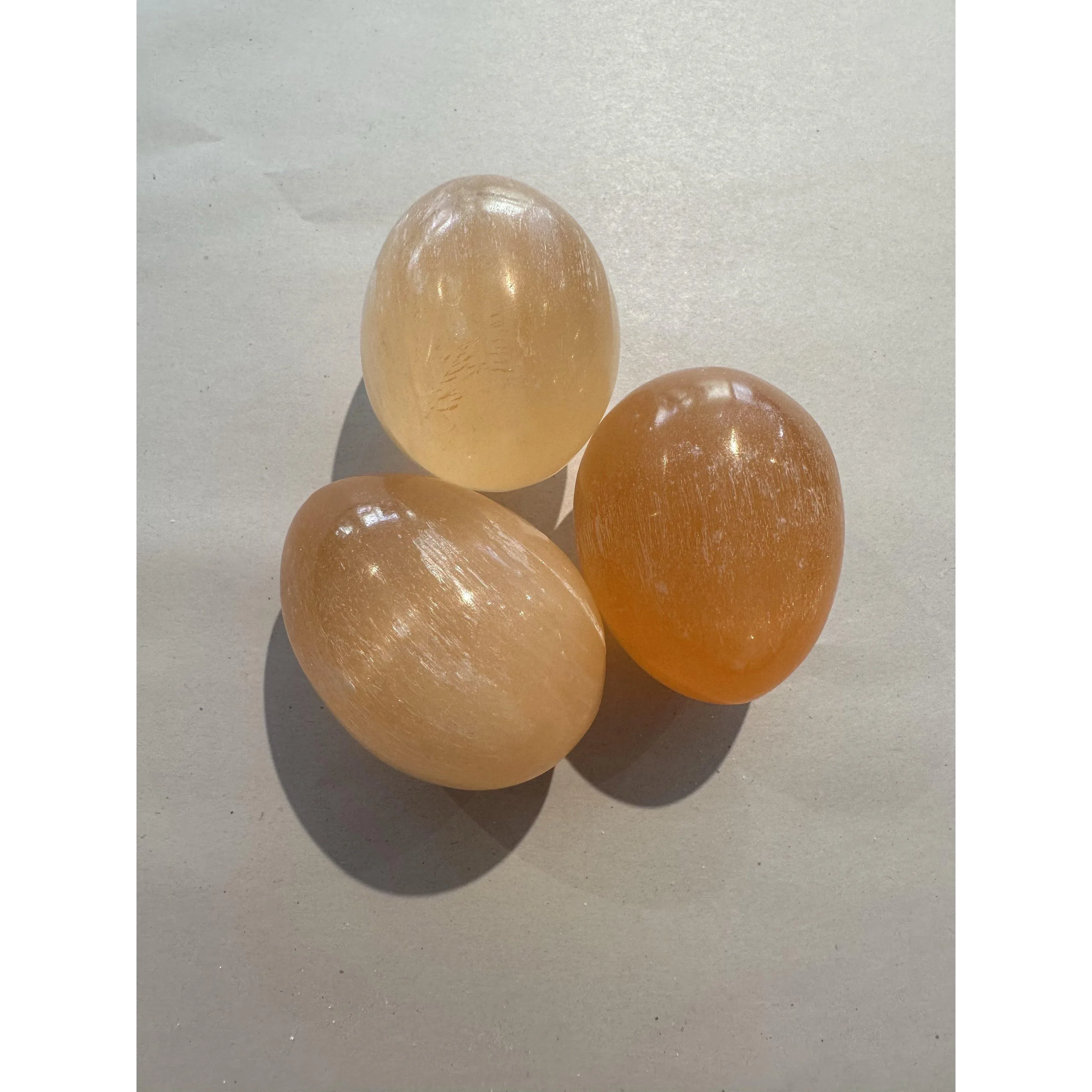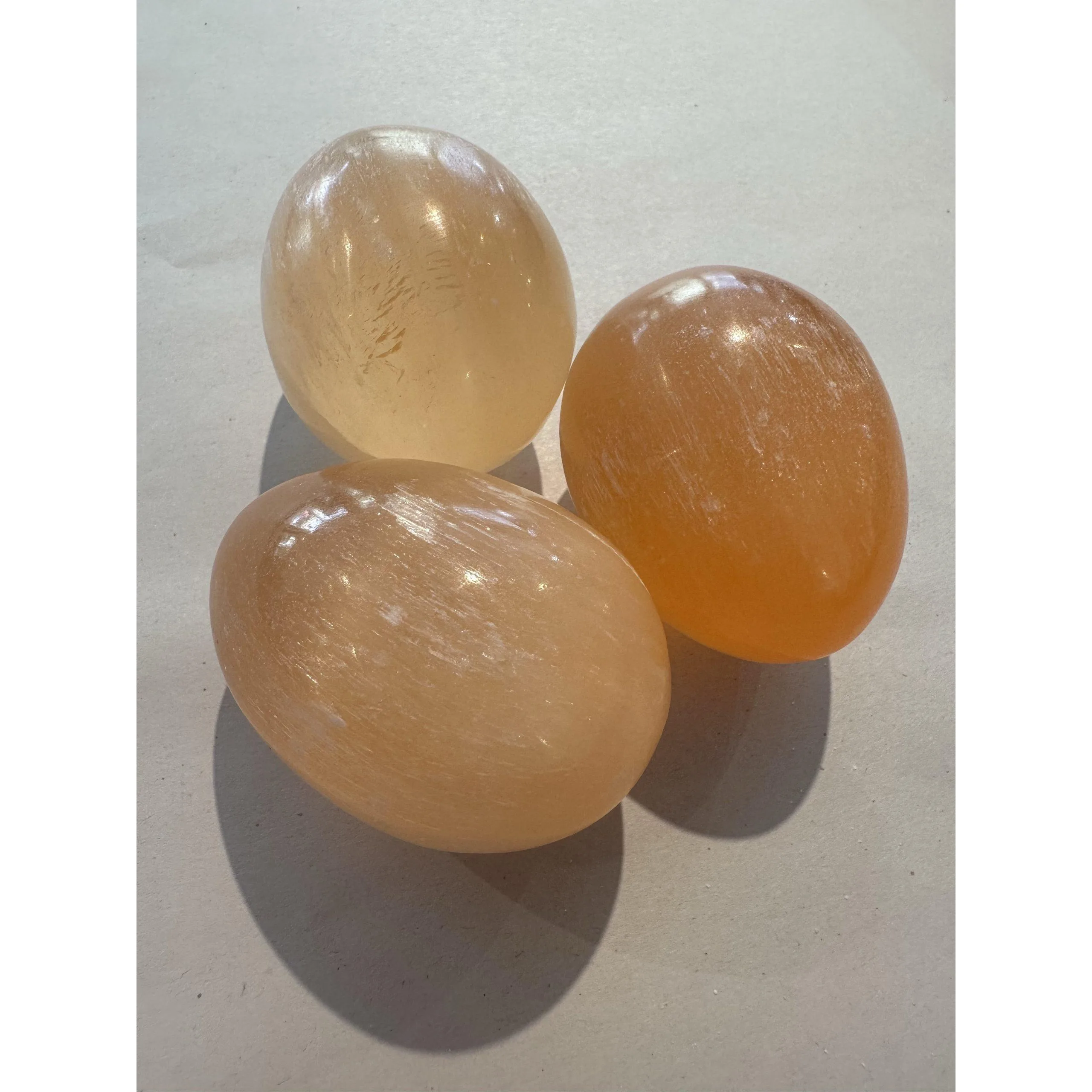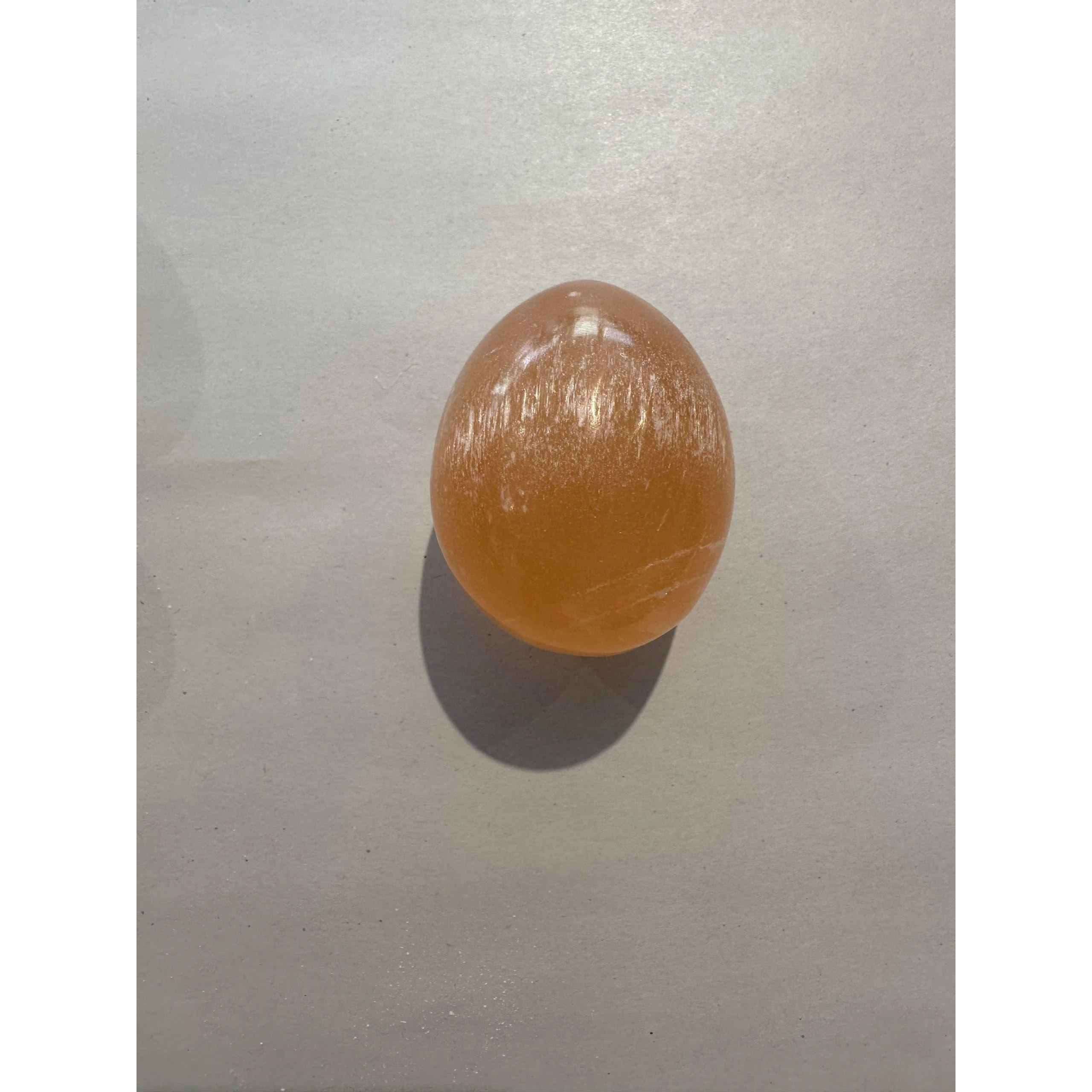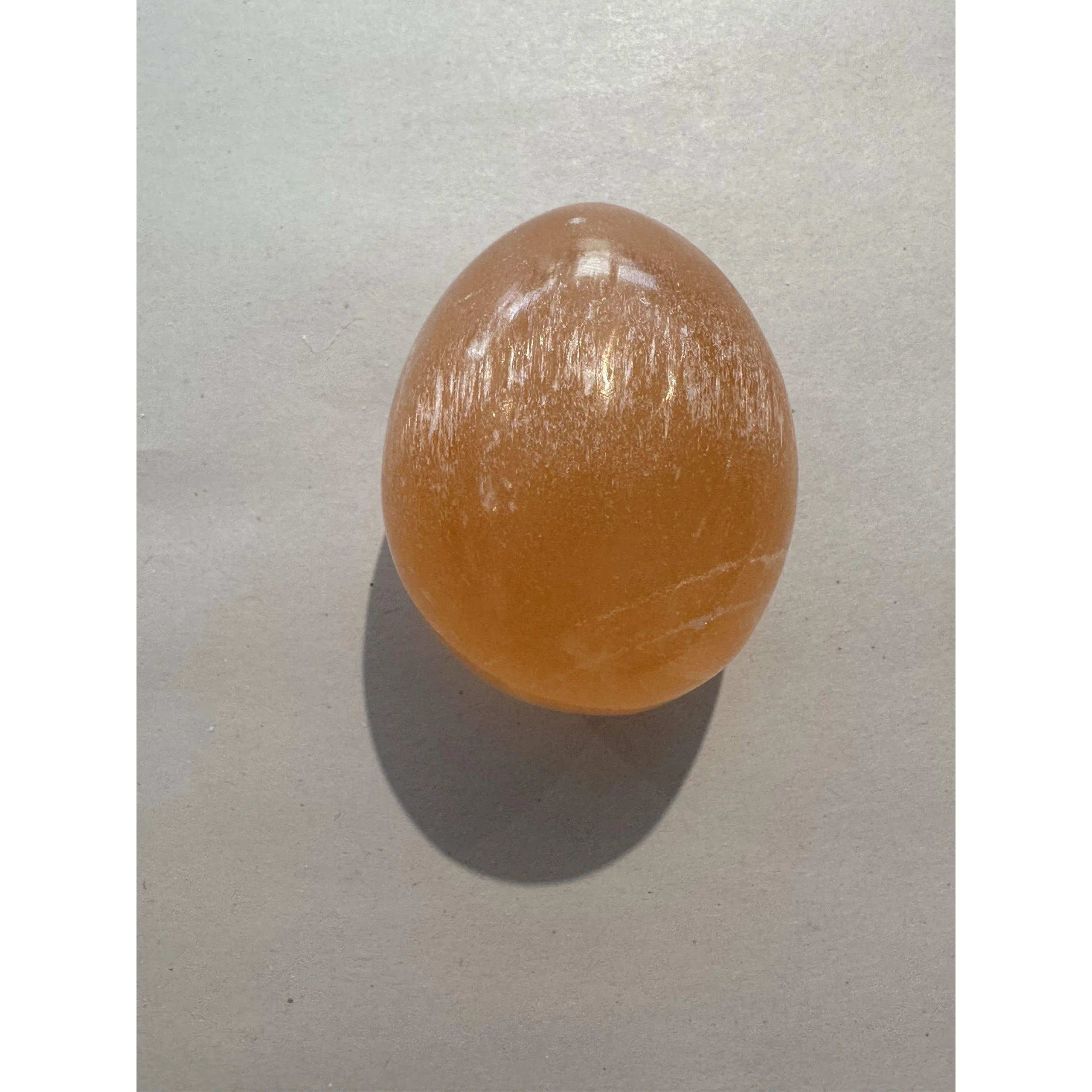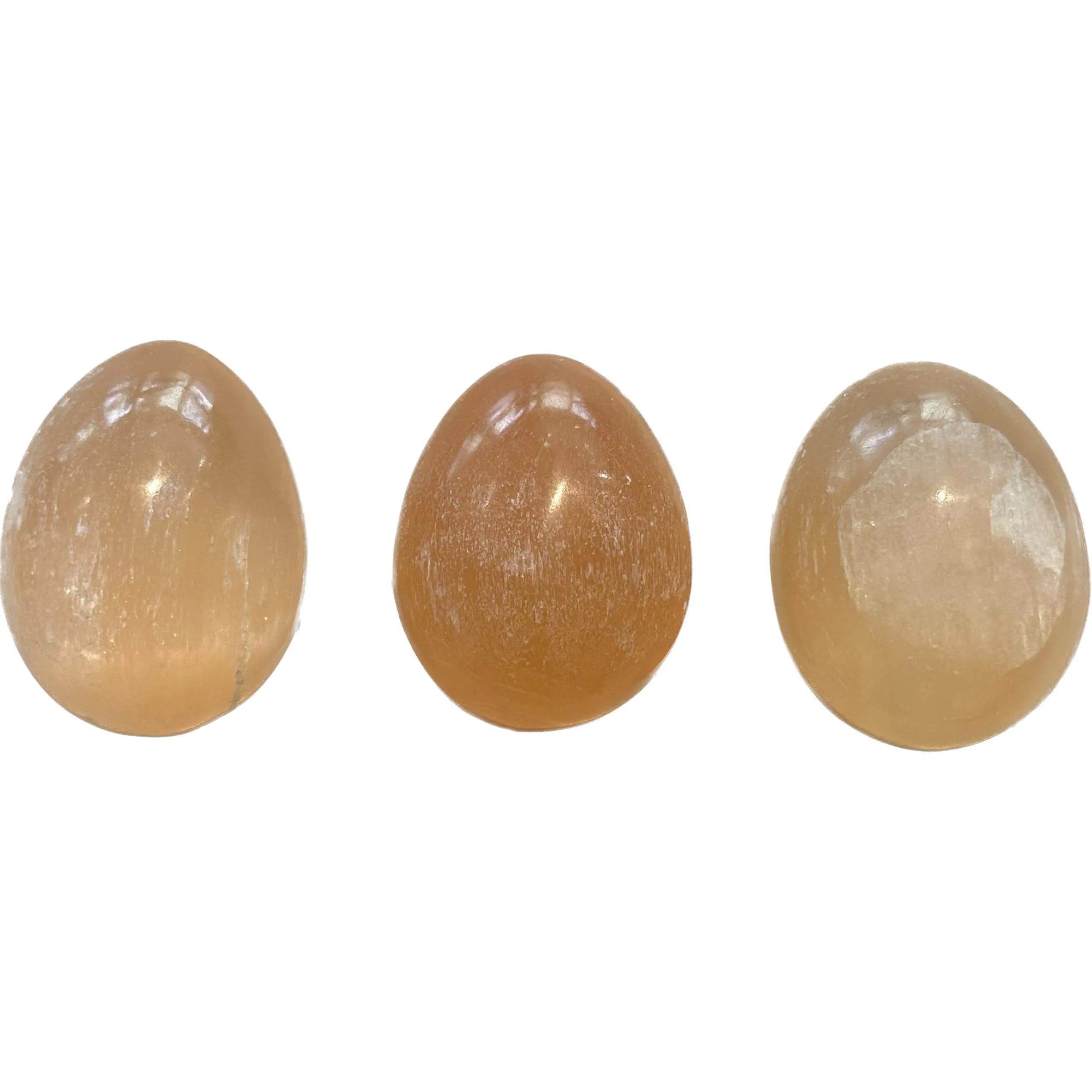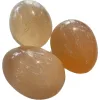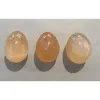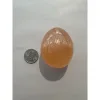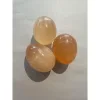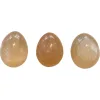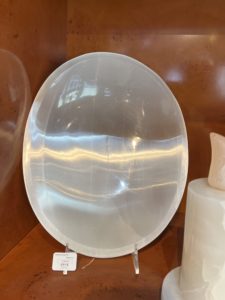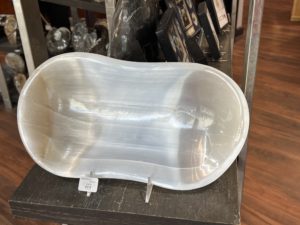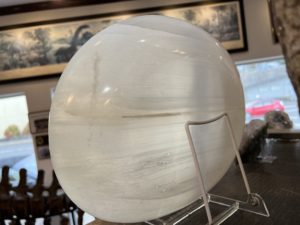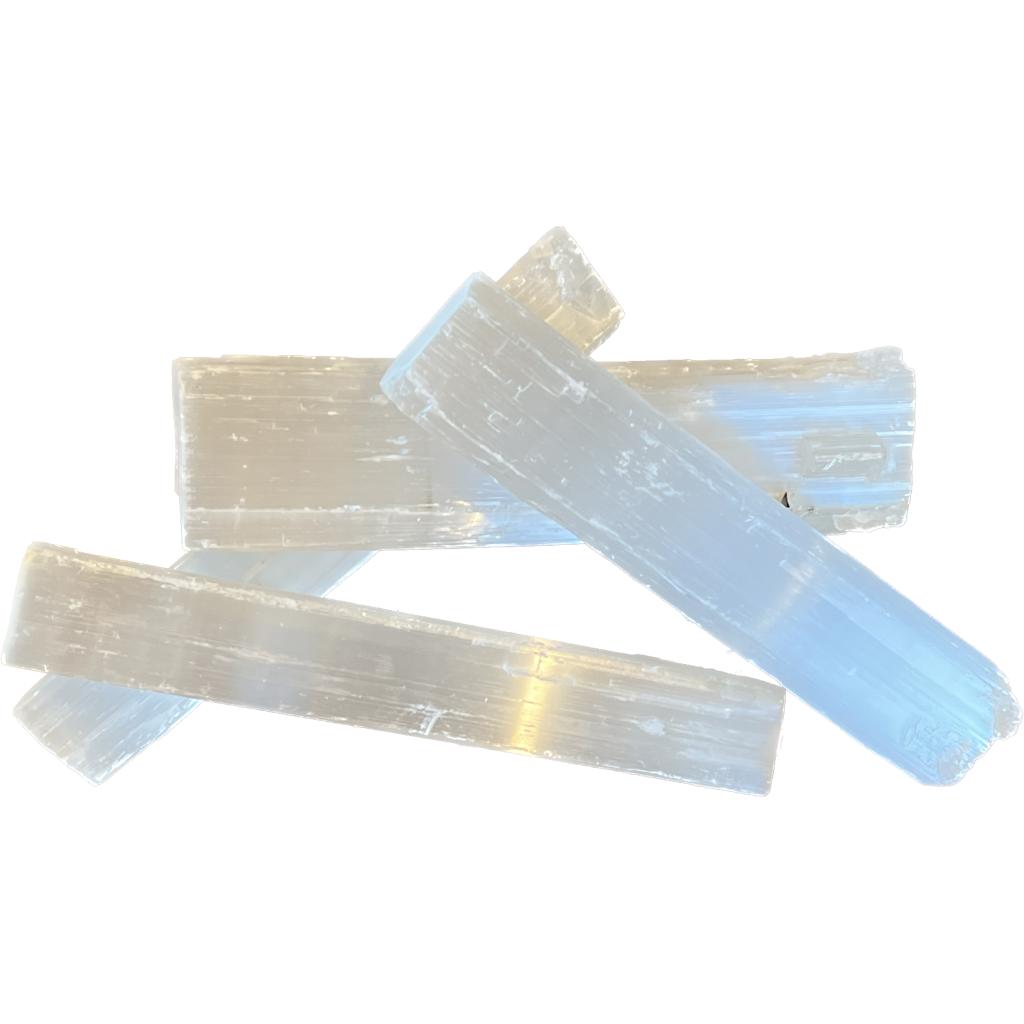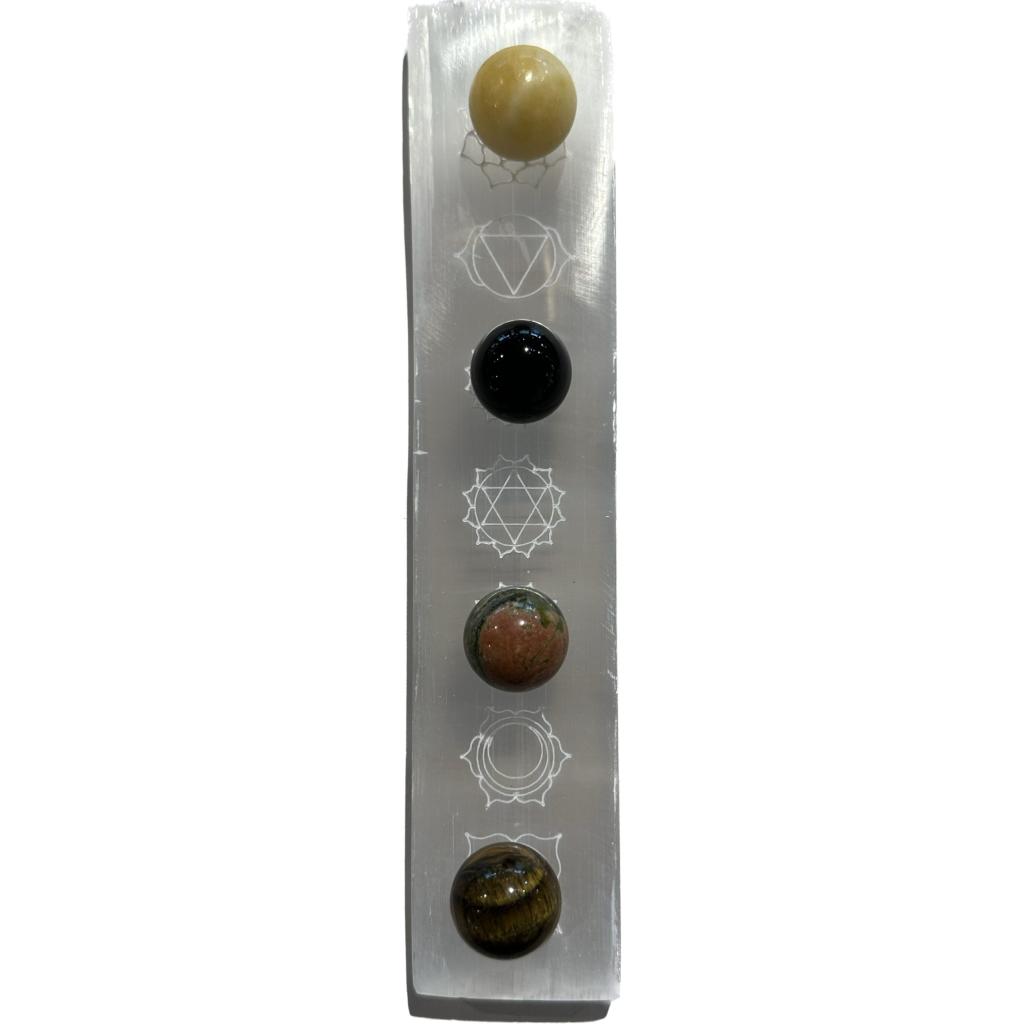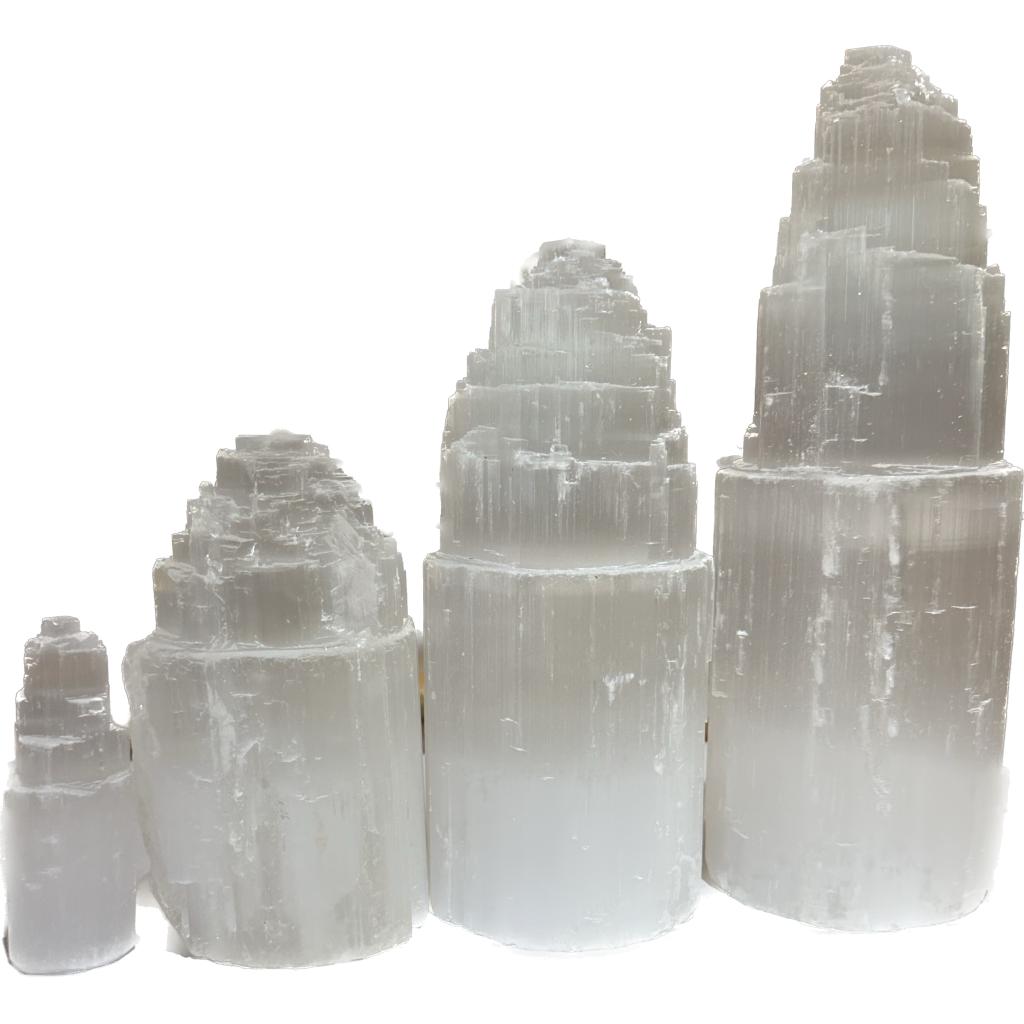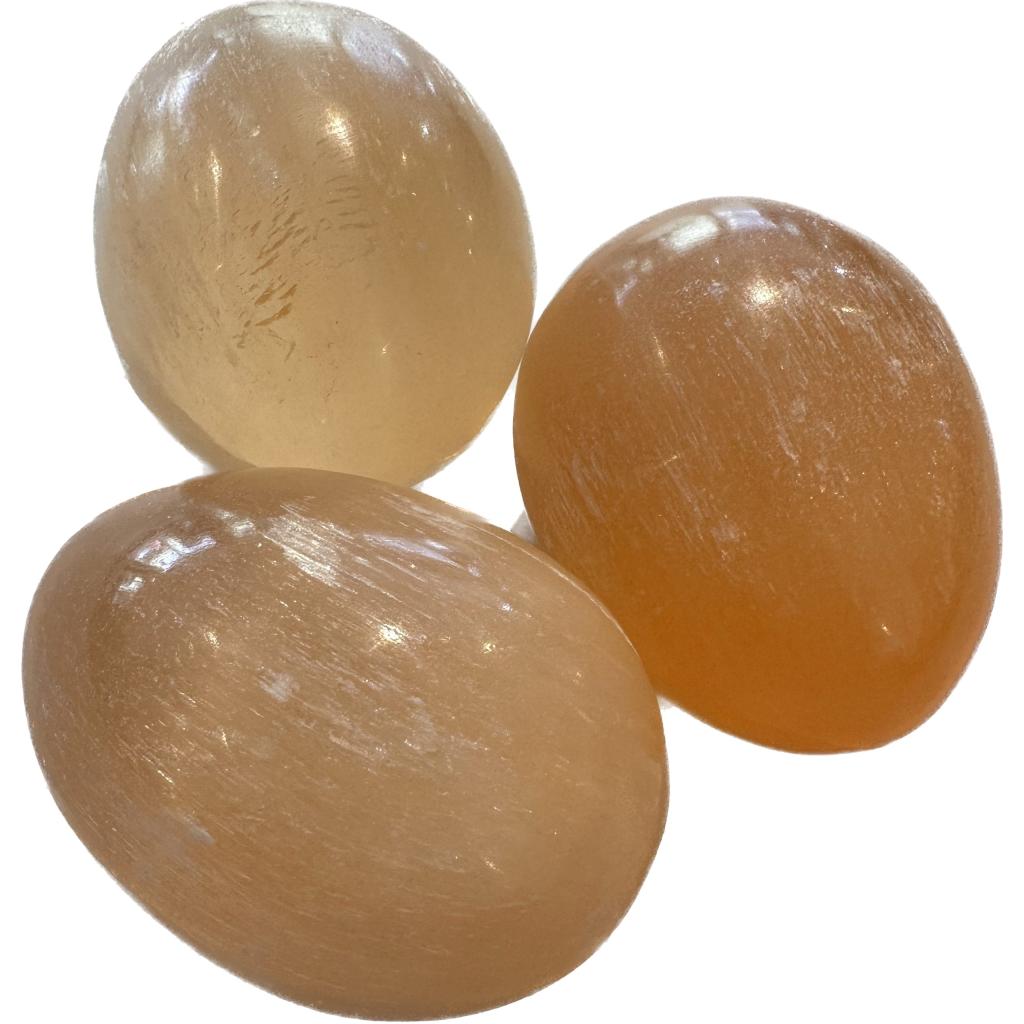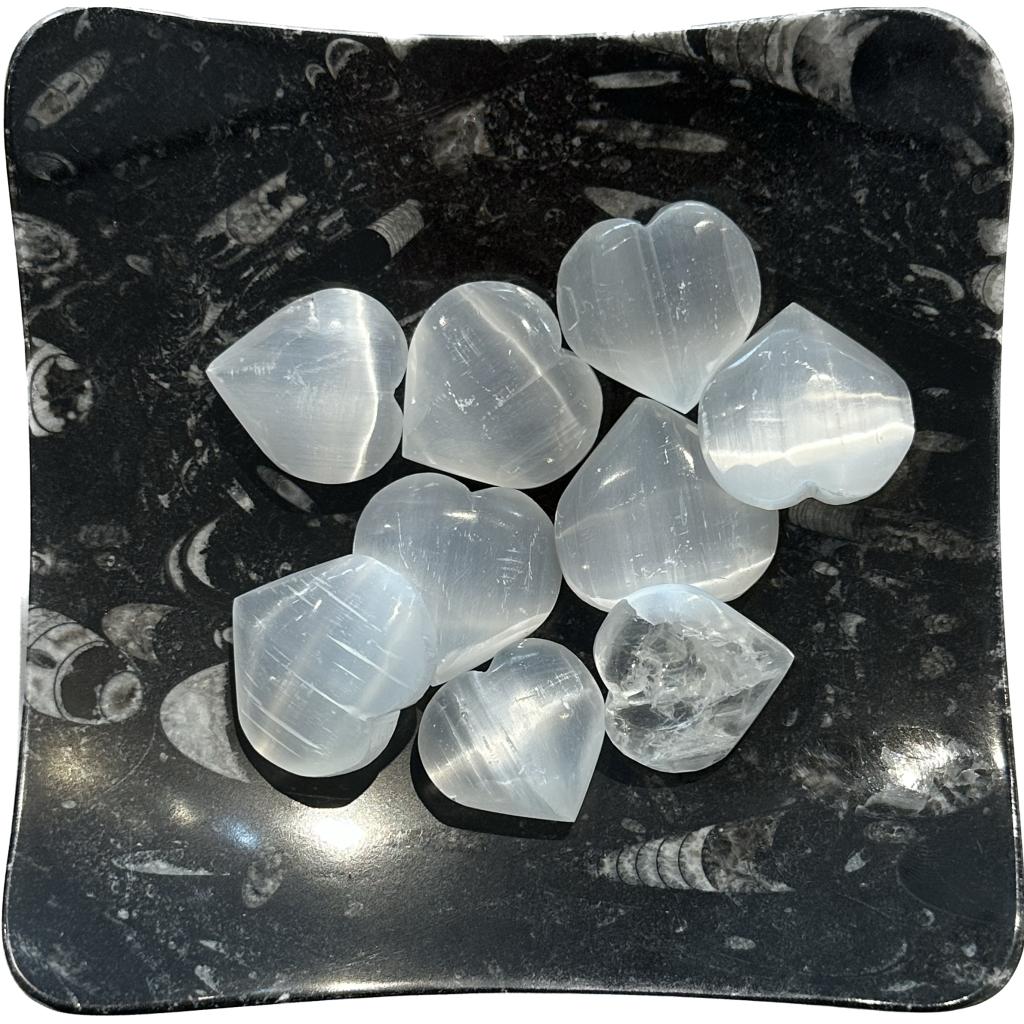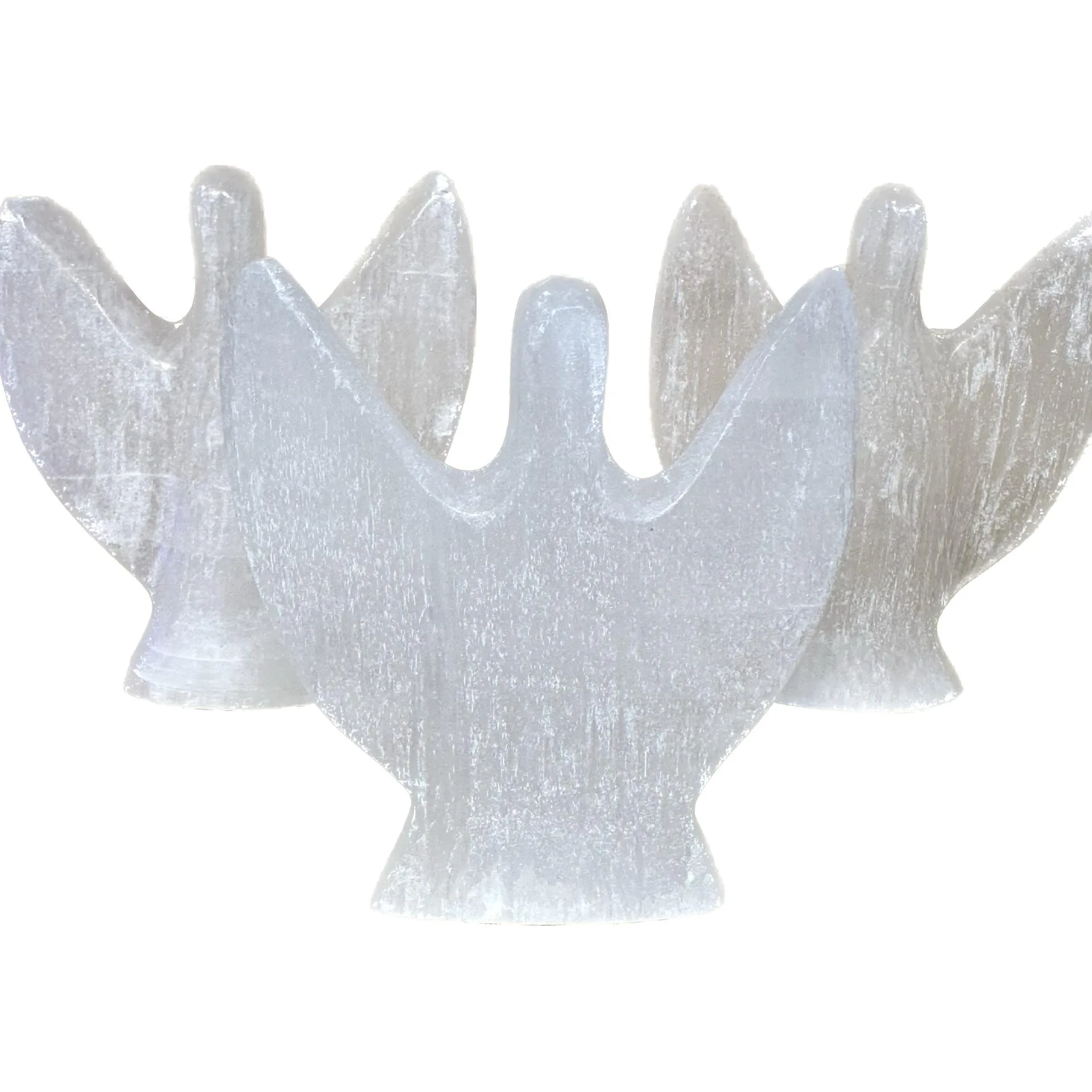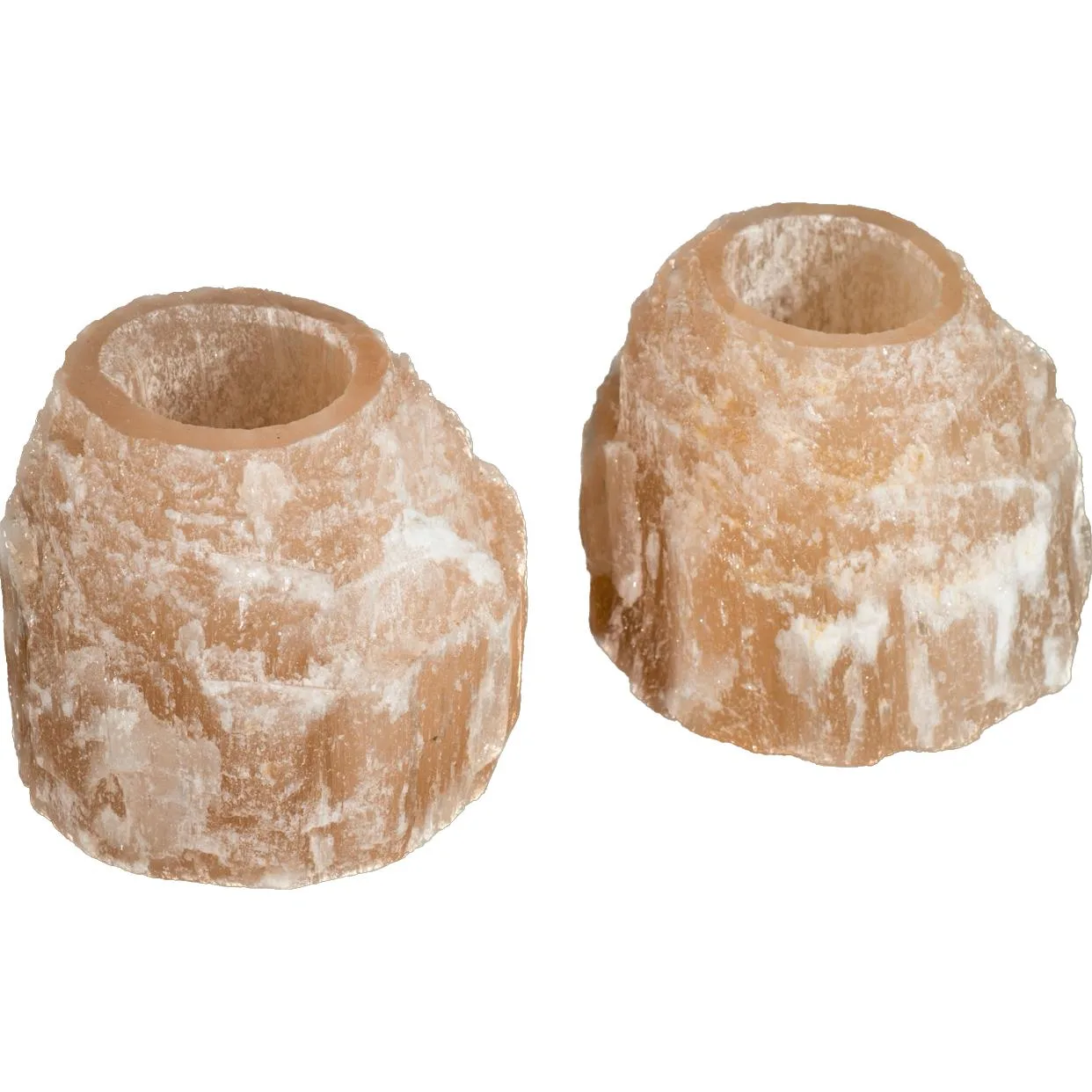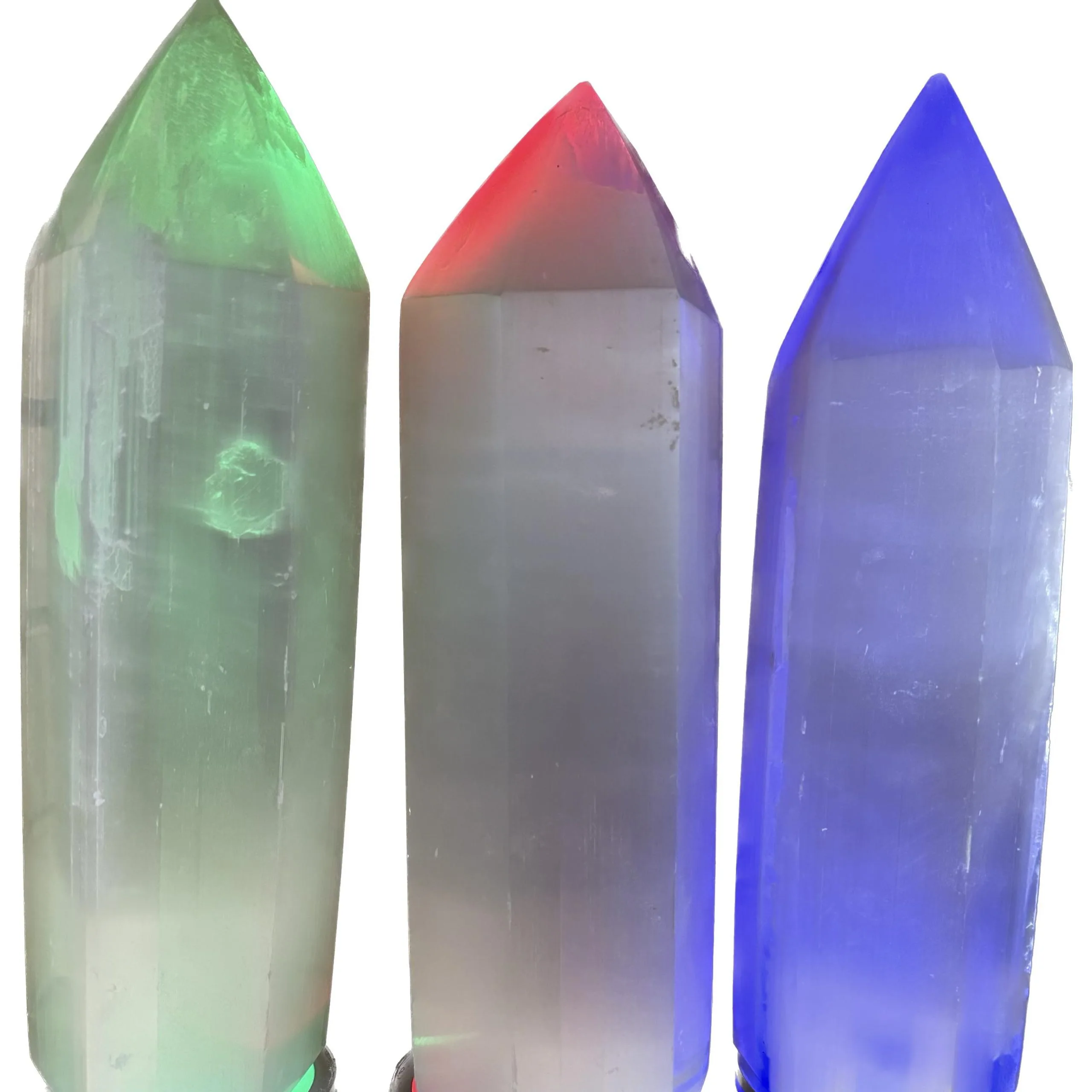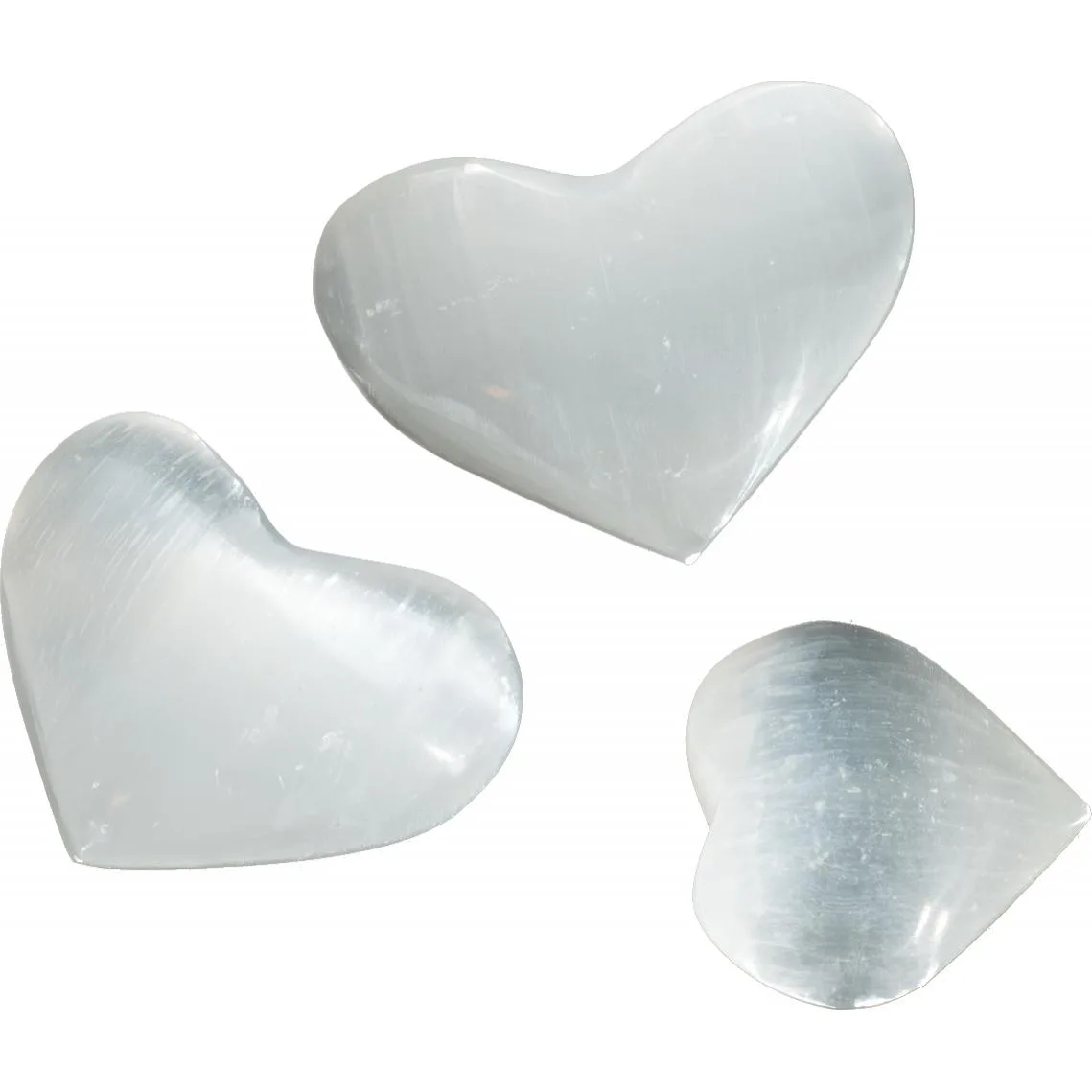Orange Selenite Egg, Morocco Mental clarity.
Selenite is a fascinating mineral with a rich history and a plethora of unique properties. Named after the Greek goddess of the moon, Selene, selenite is a form of gypsum composed of calcium sulfate dihydrate. Its name reflects its moon-like glow when polished and its association with lunar energies in metaphysical practices. In this exploration, we’ll delve into the geological origins, physical characteristics, uses, and cultural significance of selenite.
Geological Origins:
Selenite forms in sedimentary environments through the evaporation of saline water. Typically, it occurs in evaporite deposits alongside minerals like halite (rock salt) and anhydrite. These deposits often result from the gradual evaporation of ancient seas or saline lakes, leaving behind layers of gypsum crystals. Selenite crystals can take various forms, including transparent, fibrous, or translucent, depending on factors such as impurities, growth conditions, and environmental influences during formation.
Physical Characteristics:
Selenite crystals are renowned for their striking appearance and unique properties. They usually exhibit a transparent to translucent coloration, ranging from colorless to white, with occasional tinges of other hues due to impurities. The crystals often occur in prismatic or tabular shapes, with well-defined cleavage planes that lend them a distinct glassy luster. Selenite’s crystal structure consists of parallel layers of calcium sulfate molecules bonded together, giving it a characteristic fibrous or layered texture.
One of the most intriguing features of selenite is its optical properties. When light interacts with the crystal structure, selenite exhibits a phenomenon called “selenite glow” or “selenite fluorescence.” This phenomenon causes the mineral to emit a soft, ethereal light, especially when exposed to natural or artificial light sources. The glow is often compared to the gentle luminescence of moonlight, adding to selenite’s mystical allure.
Uses:
Selenite has a wide range of practical and metaphysical uses, making it a versatile mineral with diverse applications.
In the realm of construction and industry, selenite’s gypsum composition makes it valuable for various purposes. Gypsum is commonly used in the production of plaster, drywall, and cement, thanks to its fire-resistant and insulating properties. Selenite’s translucency and softness also make it suitable for carving ornamental objects, decorative items, and intricate sculptures.
Metaphysically, selenite is highly regarded for its spiritual and healing properties in alternative medicine and holistic practices. Believed to resonate with the crown chakra, selenite is thought to promote mental clarity, spiritual growth, and emotional balance. It is often used in meditation, energy healing, and aura cleansing rituals to remove negative energy and facilitate spiritual alignment. Some practitioners also use selenite wands or grids for energy work and crystal healing sessions.
Cultural Significance:
Throughout history, selenite has held cultural significance in various civilizations and belief systems. In ancient Greece, the mineral was associated with the moon goddess Selene and was believed to embody her divine energy. It was often used in rituals honoring lunar deities and was considered a symbol of intuition, intuition, and feminine power.
In ancient Egypt, selenite was highly prized for its association with the goddess Isis, who was revered as a symbol of motherhood, fertility, and healing. Selenite artifacts, such as statues and amulets, were placed in tombs and temples as offerings to the gods and as talismans for protection and spiritual guidance.
In contemporary culture, selenite remains a popular gemstone in the world of crystal healing and metaphysics. Its serene appearance and calming energy make it a sought-after crystal for spiritual practitioners, energy workers, and collectors alike. Selenite’s popularity continues to grow as more people discover its beauty and therapeutic benefits in the modern age.
Prehistoric 101 (Learn about fossils, minerals, and meteorites)
Selenite: Learn More

